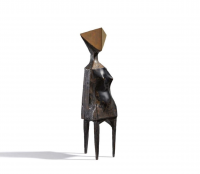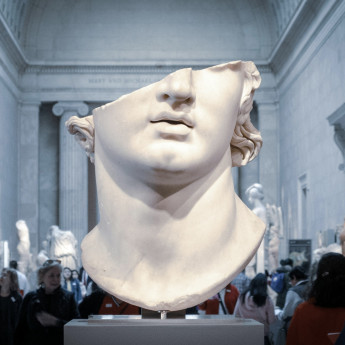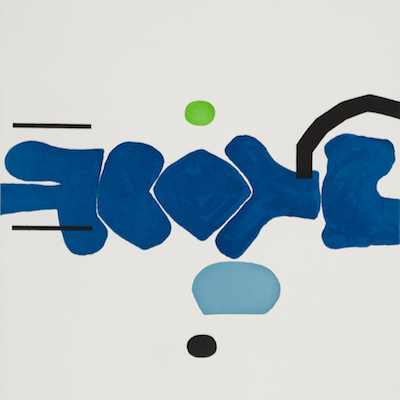
Details
Artist
Styles
Lithograph, printed at Curwen Studio, published by Raymond Spencer for the Henry Moore Foundation in an edition of 50 (H M 541–543) // Henry Moore's Reclining Figure Pointed C. 543, a 1979 lithograph, is a masterful study of form and abstraction, embodying Moore’s fascination with the human figure and organic shapes. Printed in an edition of 50 at Curwen Studio and published by the Henry Moore Foundation, this artwork presents a reclining figure rendered with fluid, curving forms that create a sense of solidity and weight, while also suggesting movement. The monochromatic tones enhance the textural quality, with deep shadows and highlights that emphasize the sculptural aspects of the form. Moore’s approach blends figuration and abstraction, allowing the figure to evoke both a human form and a natural landscape. This piece reflects Moore’s enduring exploration of form, mass, and the relationship between human and natural structures.
Reclining figure pointed C. 543, 1979
form
Medium
Size
57 x 66 cm
- Inches
- Centimeters
Edition
Price
- USD
- EUR
- GBP
Details
Artist
Styles
Lithograph, printed at Curwen Studio, published by Raymond Spencer for the Henry Moore Foundation in an edition of 50 (H M 541–543) // Henry Moore's Reclining Figure Pointed C. 543, a 1979 lithograph, is a masterful study of form and abstraction, embodying Moore’s fascination with the human figure and organic shapes. Printed in an edition of 50 at Curwen Studio and published by the Henry Moore Foundation, this artwork presents a reclining figure rendered with fluid, curving forms that create a sense of solidity and weight, while also suggesting movement. The monochromatic tones enhance the textural quality, with deep shadows and highlights that emphasize the sculptural aspects of the form. Moore’s approach blends figuration and abstraction, allowing the figure to evoke both a human form and a natural landscape. This piece reflects Moore’s enduring exploration of form, mass, and the relationship between human and natural structures.
- Recently Added
- Price (low-high )
- Price (high-low )
- Year (low-high )
- Year (high-low )
Henry Moore
Two Reclining Figures, 1983
Limited Edition Print
Etching And Aquatint
Currently Not Available
What is constructivism?
Constructivism is an architectural and artistic philosophy of Russian origin that emerged as a rejection of the idea of autonomous art. The movement advocated for art to serve practical social purposes. Since its inception in 1919, Constructivism has evolved and significantly impacted 20th-century art movements, influencing major trends such as De Stijl and Bauhaus.






























